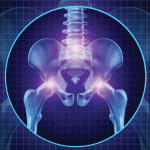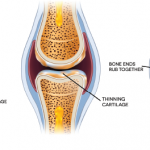Background & Objectives
Worldwide, osteoarthritis (OA) is a highly prevalent, chronic joint disease that causes pain, disability and loss of function. Global trends demonstrated an increase of more than 100% in years lived with disability due to OA from 1990 to 2019. However, no nonsurgical intervention exists to prevent, halt or even delay OA progression. Moreover, available medications, such as nonsteroidal anti-inflammatory drugs, have been associated with a clinically relevant 50–100% increase in the risk of myocardial infarction or death from cardiovascular causes. The public, healthcare providers and policymakers should be aware of the heavy burden of OA.
The prevalence of OA varies by the joints involved. The knee is the most frequently affected joint, followed by the hand and the hip. Knee, hip and hand OA each have a distinct effect on overall health. For example, knee and hip OA, but not hand OA, are associated with an increased risk of cardiovascular and all-cause premature mortality.
In addition, OA has been shown to have different pathologic mechanisms in different joints. OA of the hand has been associated with systemic inflammation, while OA of the knee and OA of the hip have been correlated with excessive joint load and injury. Taken together, these findings indicate a need for documentation regarding the burden of site-specific OA, which remains scarce in the literature.
Long et al. set out to estimate systematic and anatomic, site-specific, age-standardized prevalence rates of OA and analyze the secular trends at global, regional and national levels.
Methods
Data were derived from the Global Burden of Disease Study 2019. Age-standardized prevalence rates and their estimated annual percentage changes were used to describe the secular trends of OA according to age group, sex, region, country and territory, as well as the joints involved.
Results
From 1990 to 2019, the prevalence of OA increased globally by 113.25%, from 247.51 million in 1990 to 527.81 million in 2019. Age-standardized prevalence rates were 6,173.38 per 100,000 persons in 1990 and 6,348.25 per 100,000 persons in 2019, with an estimated annual percentage change of 0.12% (95% confidence interval [95% CI] 0.11%, 0.14%). The age-standardized prevalence rates of OA increased for the knee, hip and other joints, but decreased for the hand, with estimated annual percentage changes of 0.32 (95%CI 0.29, 0.34), 0.28 (95% CI 0.26, 0.31), 0.18 (95% CI 0.18, 0.19) and −0.36 (95% CI −0.38, −0.33), respectively. OA prevalence increased with age and revealed female preponderance, geographic diversity and disparity with regard to anatomic site. OA of the knee contributed the most to the overall burden, while OA of the hip had the highest estimated annual percentage changes in most regions.


